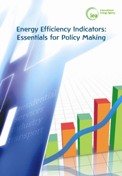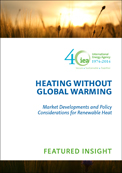Global electricity review 2024
Renewables generated a record 30 percent of global electricity in 2023, driven by growth in solar and wind especially from China, according to the Global Electricity Review 2024 released by the global
Renewables generated a record 30 percent of global electricity in 2023, driven by growth in solar and wind especially from China, according to the Global Electricity Review 2024 released by the global
A focus on carbon intensity alone will allow emissions to grow with the economy, argues Qiang Wang.
India's key energy challenges include but not limited to: (1) increasing domestic production of primary fuels; (2) securing necessary imports of primary fuels at relatively stable prices; (3) attracting
Intended nationally determined contributions of Parties in the context of the 2015 agreement - Draft Text on ADP 2-6 agenda item 3 Implementation of all the elements of decision 1/CP.17
This paper calculates energy security, sustainability, and affordability from 2010 to 2035 for the Asia and Pacific region using the following indicators: primary energy intensity, carbon dioxide intensity
This paper aims to provide a review of the organisations and governments involved in supporting other countries to reform their fossil fuel subsidies and the approaches being undertaken. It builds a comprehensive
There is growing international focus on how to support more integrated approaches to addressing climate change in ways that capture synergies and minimise the trade-offs between climate change mitigation,

Energy efficiency is a growing policy priority for many countries around the world. It is widely recognised as the most cost-effective and readily available means to address numerous energy-related issues,
This report outlines BSR’s new strategy to mobilize its business network, global reach, industry insights, and issue expertise in support of sustained business action on climate change. It begins with

This new paper published by the International Energy Agency (IEA) highlights some of the dynamics of renewable energy use for heat in different markets, the status of different technologies and policy measures to efficiently promote renewable heat, and provides an outlook for the potential role of renewable heat in the medium- and long-term.
Reducing greenhouse gas emissions to avert potentially disastrous global climate change requires substantial redevelopment of infrastructure systems. Cities are recognized as key actors for leading such